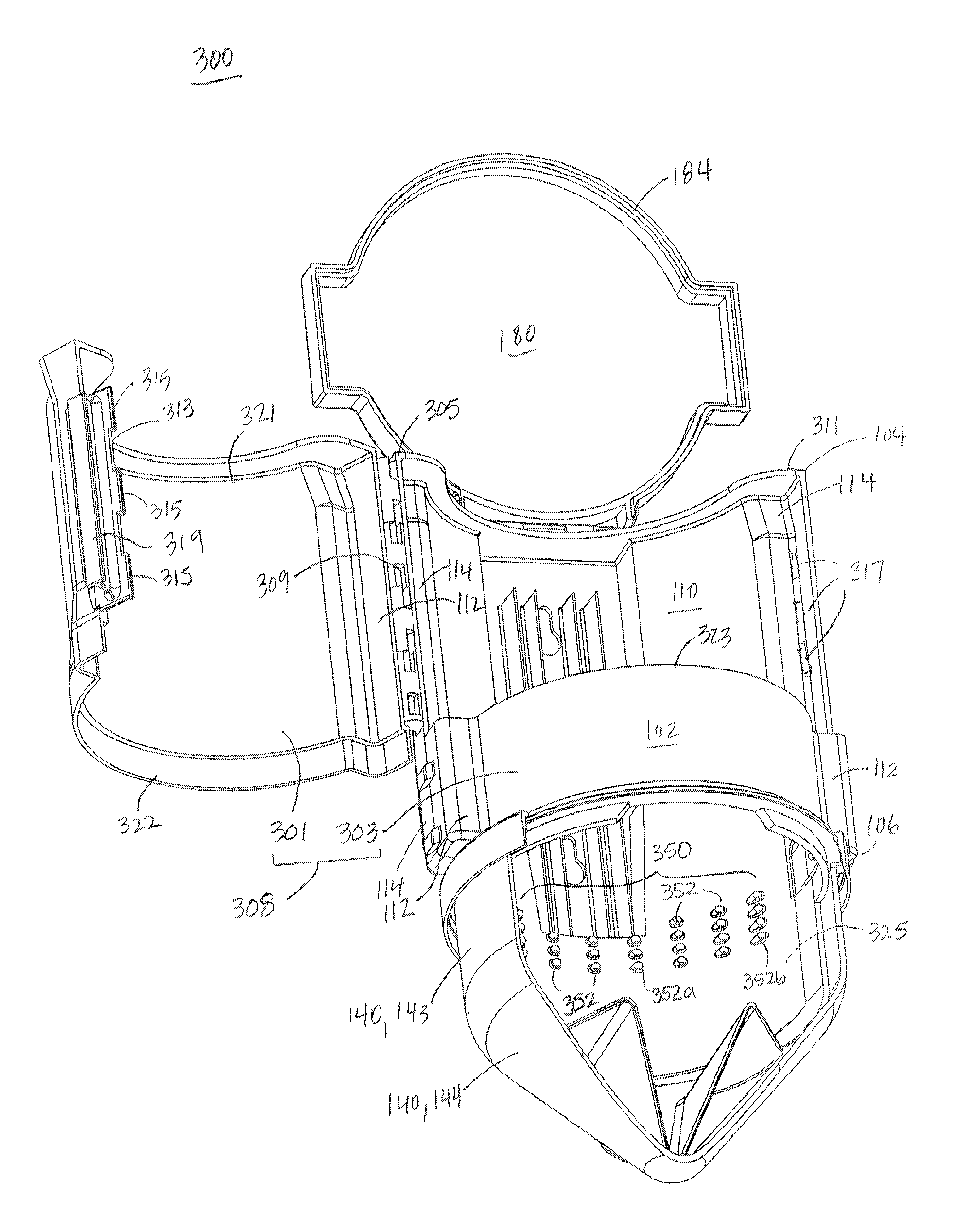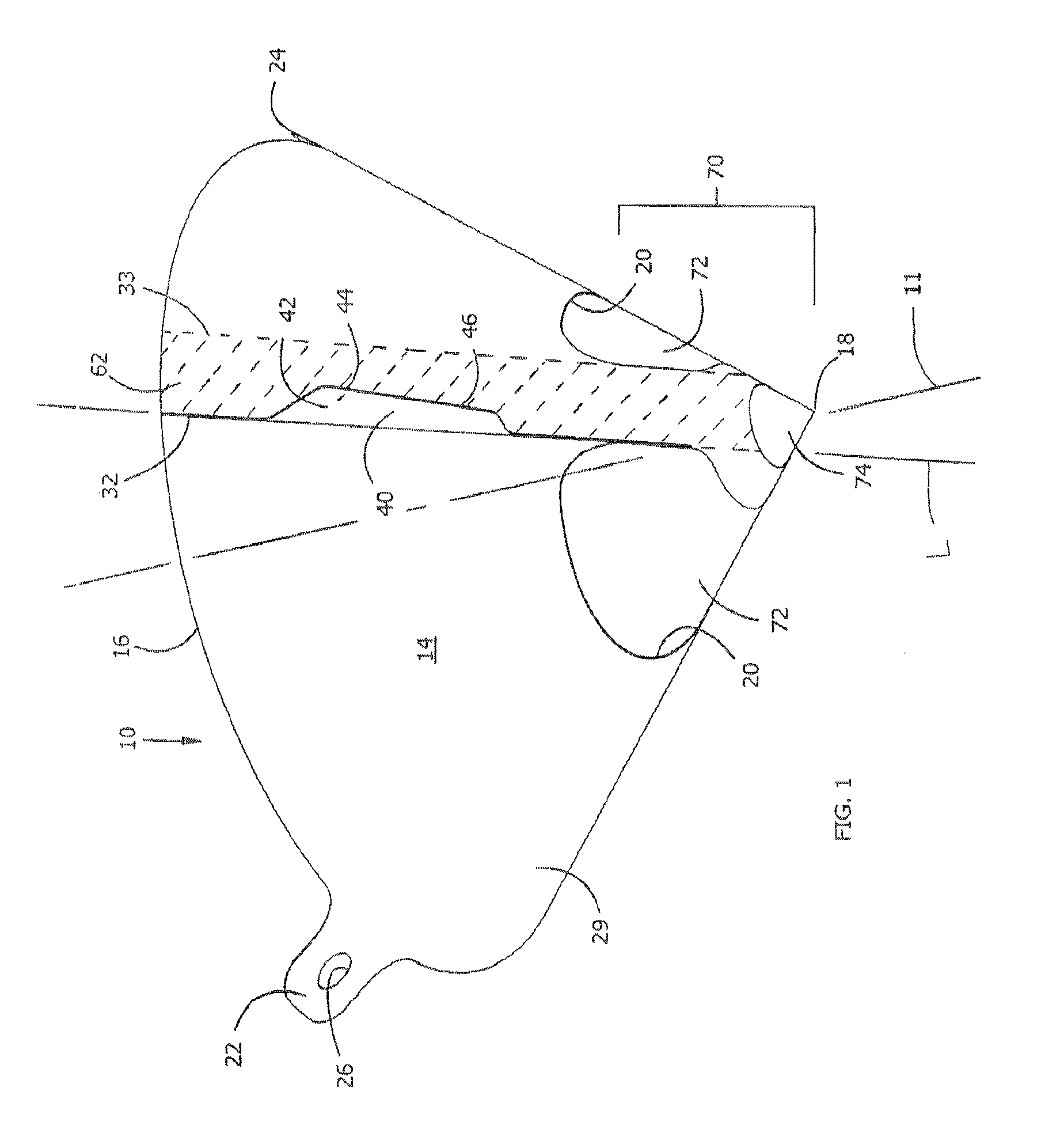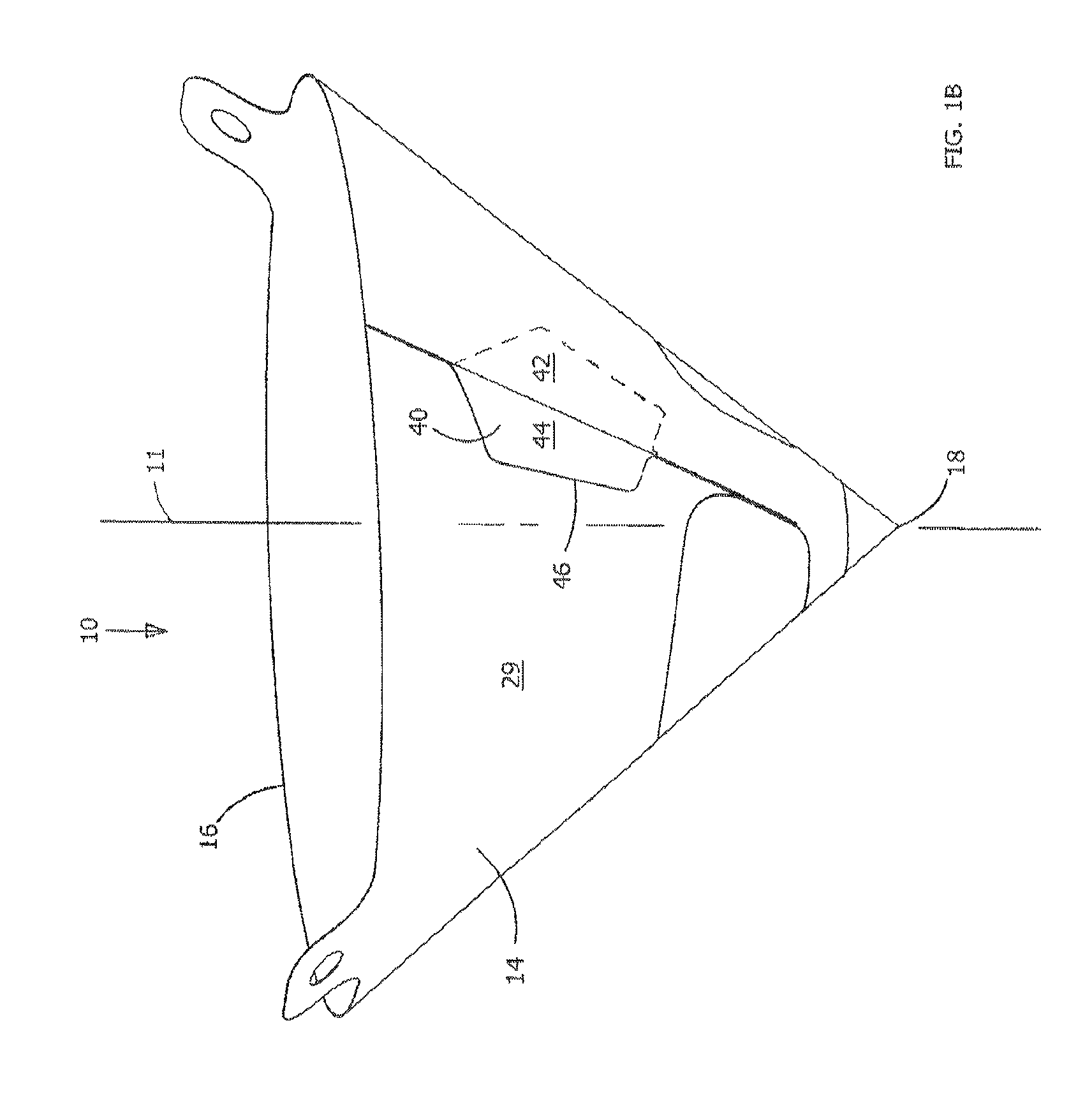Strainer dispenser and method of use
a strainer and dispenser technology, applied in the direction of rigid containers, pile separation, transportation and packaging, etc., can solve the problems of clogging the spray gun, dust can fall into the paint cup, and the uniformity of the painting is compromised, so as to minimize the “open” time of the filter mesh, avoid contamination, and easy to remove
- Summary
- Abstract
- Description
- Claims
- Application Information
AI Technical Summary
Benefits of technology
Problems solved by technology
Method used
Image
Examples
Embodiment Construction
[0046]Referring now to FIG. 1, a disposable liquid strainer 10 is shown which includes a hollow, conical body 14 having an open, generally circular end defined by a rim 16. The conical body tapers to an apex 18 that is opposed to the rim 16. The rim may include rim tabs 22, 24 that permit positioning and support of the strainer 10 or allow removal of the strainer from a spray gun cup by an area free of paint. The rim tabs 22, 24 extend outward from the rim 16 so as to extend the exterior surface 28 of the conical body 14. The rim tabs 22, 24 serve as handles by which the strainer 10 can be held and positioned, and each includes a through hole 26 by which the strainer can be secured to a stand if desired. The strainer 10 is provided with a filtering region 70 in the vicinity of the apex 18 that includes side filter areas 72 and an apex filter area 74.
[0047]In addition, the strainer 10 is provided with a dispensing tab 40 which protrudes from an exterior surface 29 of the strainer 10 ...
PUM
| Property | Measurement | Unit |
|---|---|---|
| pore size | aaaaa | aaaaa |
| diameter | aaaaa | aaaaa |
| arc angle | aaaaa | aaaaa |
Abstract
Description
Claims
Application Information
 Login to View More
Login to View More - R&D
- Intellectual Property
- Life Sciences
- Materials
- Tech Scout
- Unparalleled Data Quality
- Higher Quality Content
- 60% Fewer Hallucinations
Browse by: Latest US Patents, China's latest patents, Technical Efficacy Thesaurus, Application Domain, Technology Topic, Popular Technical Reports.
© 2025 PatSnap. All rights reserved.Legal|Privacy policy|Modern Slavery Act Transparency Statement|Sitemap|About US| Contact US: help@patsnap.com



